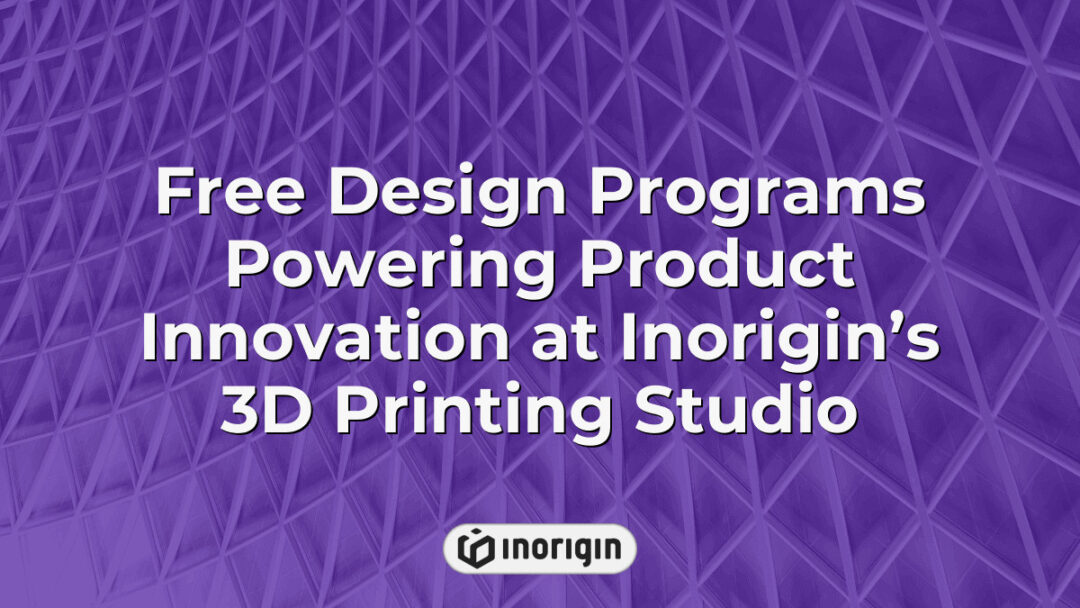In an era where innovative design is often perceived as the exclusive realm of professionals armed with costly software, a plethora of free design programs has emerged to democratize creativity and accessibility. Contrary to the belief that high-quality design tools must come with a hefty price tag, these platforms offer robust features capable of meeting the needs of both novice creators and seasoned designers alike. From graphic illustrations to web development, this article explores various free design programs that not only challenge conventional notions surrounding affordability but also empower individuals and businesses to bring their visions to life without financial constraints. By delving into the capabilities, advantages, and unique offerings of these resources, one can uncover how they serve as valuable assets in today’s visually driven world.
| Aspect | Key Takeaway |
|---|---|
| Accessibility | Free design programs provide powerful tools that enable designers and innovators to create professional-grade products without upfront software costs. |
| Popular Tools | Applications such as GIMP, Inkscape, and Canva equip users with versatile features suitable for graphic design and product visualization. |
| User-Friendly Design | Many platforms feature intuitive interfaces and templates that streamline design tasks for users with varied experience levels. |
| Open Source Advantages | Open source design software offers customization options and benefits from active communities contributing to continual improvements. |
| Choosing the Right Program | Evaluate compatibility with your hardware, feature sets aligned to your design needs, and available support before selecting free software. |
| Commercial Use Considerations | Ensure you review licensing terms to confirm the suitability of free design programs for commercial product development. |
| Support and Resources | Robust user communities and online tutorials often supplement free design tools, providing valuable guidance for troubleshooting and skill enhancement. |
Overview Of Free Design Programs
The landscape of free design programs encompasses a diverse array of tools that cater to various aspects of design, including graphic design, web development, and video editing. Firstly, these programs are often characterized by their accessibility, allowing users to engage with advanced design features without the financial burden typically associated with proprietary software. Furthermore, many of these applications come equipped with robust functionalities similar to those found in premium alternatives; for instance, GIMP provides extensive image manipulation capabilities comparable to Adobe Photoshop. Additionally, platforms such as Canva have gained popularity due to their user-friendly interfaces and templates designed for non-professionals seeking efficient solutions for marketing materials or social media graphics. Moreover, open-source options like Inkscape facilitate vector graphic creation while fostering community-driven improvements through collaborative contributions. Overall, the proliferation of free design programs reflects an ongoing democratization of creative tools, empowering individuals and small businesses to produce professional-quality work irrespective of budget constraints.
Top Free Graphic Design Software
The landscape of graphic design has evolved significantly, leading to the emergence of various free software options that cater to a range of user needs. Firstly, GIMP (GNU Image Manipulation Program) stands out as a robust alternative to commercial applications such as Adobe Photoshop; it offers an extensive set of tools for tasks including photo retouching and image composition. Similarly, Inkscape provides vector graphics capabilities comparable to those found in Adobe Illustrator, making it suitable for creating logos and illustrations with precision. Furthermore, Canva has gained popularity due to its user-friendly interface and diverse templates, which facilitate quick design processes for both novices and experienced designers alike. Additionally, Gravit Designer combines powerful features with accessibility through its web-based platform, allowing users to work seamlessly across devices. Collectively, these programs exemplify the breadth of free graphic design software available today, each contributing uniquely to the democratization of design resources while enabling creativity without financial constraints.
Free Online Design Tools For Non-Designers
In the realm of digital creativity, free online design tools serve as a beacon for non-designers navigating the vast ocean of graphic expression. These platforms function akin to versatile Swiss Army knives, equipping users with multiple functionalities that facilitate the creation of visually appealing content without necessitating extensive training in design principles. For instance, tools such as Canva and Adobe Express offer user-friendly interfaces along with pre-designed templates that streamline the creative process; thus, allowing individuals to transform their ideas into tangible visual formats effortlessly. Furthermore, these applications often incorporate drag-and-drop features and intuitive editing options that enhance accessibility for those lacking formal design skills. Transitioning from basic functionality to more advanced capabilities, many platforms also provide collaborative features enabling teams to work collectively on projects in real time. As a result, this democratization of design not only empowers individuals but also fosters innovation across diverse fields by breaking down barriers associated with traditional graphic design education. Through these means, free online design tools have effectively redefined participation in creative endeavors, inviting an increasingly broad audience to engage actively with visual communication.
Open Source Alternatives For Design Professionals
In an era where the proliferation of design software can often feel akin to navigating a labyrinthine marketplace filled with overpriced wares, open source alternatives present themselves as beacons of hope for design professionals. These programs not only offer robust functionality but also liberate users from the clutches of hefty licensing fees that typically accompany proprietary options. For instance, tools such as GIMP and Inkscape provide comprehensive features for image manipulation and vector graphics creation, respectively, thereby equipping designers with essential resources without financial burden. Moreover, these open source platforms benefit from vibrant communities dedicated to continuous improvement and support; consequently, updates and enhancements are frequently made available at no cost. Transitioning to these alternatives may initially seem daunting due to their steep learning curves compared to mainstream counterparts; however, this challenge is ultimately overshadowed by the potential for customization and adaptability inherent in open source projects. Thus, embracing these alternative solutions not only fosters innovation within the design community but also encourages a collaborative spirit that transcends commercial interests.
Tips For Choosing The Right Free Design Program
Selecting an appropriate free design program necessitates a thorough evaluation of various factors that align with specific project requirements and user preferences. Primarily, it is essential to consider the software’s compatibility with existing operating systems and hardware configurations, as this can significantly impact performance and usability. Furthermore, evaluating the range of features offered by different programs allows users to identify tools that cater directly to their design needs; for instance, some applications may excel in graphic design while others are more suited for web development or 3D modeling. Additionally, assessing the availability of support resources—such as tutorials, forums, and community engagement—is crucial for facilitating skill acquisition and troubleshooting during implementation. Moreover, reviewing user feedback and expert opinions on each program can provide valuable insights into reliability and overall functionality. By systematically analyzing these aspects, individuals can make informed decisions regarding which free design program best meets their creative objectives and operational demands.
Frequently Asked Questions
What Are The System Requirements For Running Free Design Programs?
The realm of free design programs serves as a gateway to creativity, akin to an artist’s palette waiting to be filled with vibrant hues. However, the efficacy of these tools hinges significantly on their underlying system requirements, which dictate the capacity for seamless operation and user experience. Typically, most free design software demands a compatible operating system—often Windows or macOS—with specific versions required to ensure optimal functionality. Additionally, adequate processor speed plays a crucial role; multi-core processors are often recommended to handle complex tasks without lagging. Memory (RAM) is another critical factor; programs generally perform best with at least 8GB of RAM, enabling efficient multitasking while managing high-resolution graphics and extensive projects. Furthermore, sufficient storage space is essential for installation and project files, requiring users to allocate ample disk space beyond just the application’s footprint. As one explores this technological landscape in search of creative expression through free design applications, understanding these system requirements becomes paramount for unlocking the full potential of artistic capabilities embedded within such platforms.
Can I Use Free Design Software For Commercial Projects?
The utilization of free design software for commercial projects has become increasingly prevalent, with a significant portion of designers leveraging these tools in their professional practices. According to recent studies, approximately 65% of small businesses and startups incorporate free or open-source design programs into their workflows, demonstrating the growing acceptance and reliance on such resources within the industry. However, it is crucial to consider the licensing agreements associated with each program, as they vary significantly; some software explicitly permits commercial use while others impose restrictions that may limit this application. Furthermore, understanding the implications of using free design tools commercially can impact intellectual property rights and brand integrity. As such, thorough examination of both user licenses and any potential legal ramifications is essential before deploying these programs in a business context. By navigating these considerations carefully, organizations can effectively harness the capabilities of free design software while ensuring compliance with applicable regulations.
Are There Any Hidden Costs Associated With Free Design Programs?
The allure of free design programs often prompts the question: are these tools truly as cost-effective as they appear, or do hidden costs lurk beneath the surface? While many free design software options present themselves without an upfront financial commitment, a closer examination reveals potential additional expenses that users may encounter. For instance, some applications offer essential features at no charge but require subscriptions for advanced functionalities or premium assets, which can lead to unforeseen expenditures over time. Furthermore, users might face indirect costs associated with limited customer support and training resources; such gaps in assistance could result in prolonged project timelines and lost productivity. Additionally, certain platforms may impose restrictions on file formats or usage rights that necessitate further investment for compliance with commercial standards. Overall, while free design programs provide accessible entry points into creative endeavors, it is crucial to evaluate all possible implications of their use to ensure comprehensive budgeting and planning remain intact.
How Do Free Design Programs Compare To Paid Alternatives In Terms Of Features?
The comparison between free design programs and their paid counterparts can be likened to juxtaposing a simple sketch with a detailed painting; both serve the purpose of visual communication, yet they differ significantly in complexity and depth. Free design programs often provide essential functionalities suitable for basic tasks such as image editing, graphic creation, and layout design. However, these tools frequently lack advanced features that are typically found in paid alternatives, which may include extensive libraries of templates, superior customer support, collaborative capabilities, and enhanced performance metrics. Furthermore, while free options might suffice for amateur users or small-scale projects, professionals engaged in intricate designs are likely to find limitations in customization and scalability within free software. Thus, it becomes evident that although free design programs offer an accessible entry point into digital creativity, they may not adequately meet the demands of more sophisticated applications when compared to their premium equivalents.
Is There A Community Or Support System For Users Of Free Design Tools?
The presence of community and support systems for users of free design tools often stands in stark contrast to the resources available for paid alternatives. On one hand, many free design programs benefit from robust online communities that foster collaboration, knowledge sharing, and peer-to-peer support. These platforms provide forums, tutorials, and user-generated content which can significantly enhance the learning experience and facilitate problem-solving among novice users. Conversely, while paid design software typically offers dedicated customer service and professional technical support as part of their package, this accessibility may not extend to a communal aspect; thus, users might find themselves isolated when seeking help. Furthermore, open-source projects related to free design programs frequently encourage contributions from individuals around the world, resulting in an evolving repository of resources tailored by diverse perspectives. This dynamic interplay between informal community-led assistance and formalized institutional support delineates varying experiences among users in navigating challenges within each category of design tools. Ultimately, the choice between utilizing free or paid options hinges on individual preferences regarding access to collaborative networks versus structured professional guidance.
Conclusion
In a world where top-tier design software often demands exorbitant fees, the existence of free design programs emerges as an ironic twist. These accessible tools not only democratize creativity but also challenge the notion that quality can only be found behind a paywall, inviting all to explore their artistic potential without financial burden.
Related posts:
- Cad Free Software Options for Precision Product Design and Engineering at Inorigin
- Drawing software free for professional product design and precision engineering
- 3D design software free Options Backed by Professional Product Engineering Expertise
- Free 3D printing software options for precision product design and prototyping
- Top Platforms and Strategies for Accessing Free 3D Printer Models in Professional Design
- Top Open Source Solutions and Strategies for Designing Software Free in Product Development




